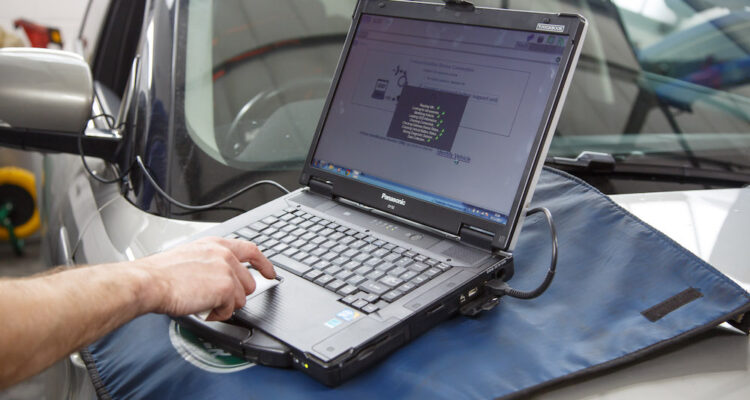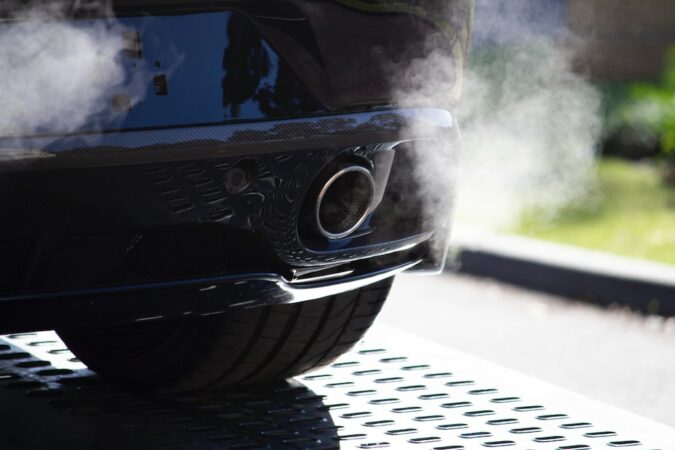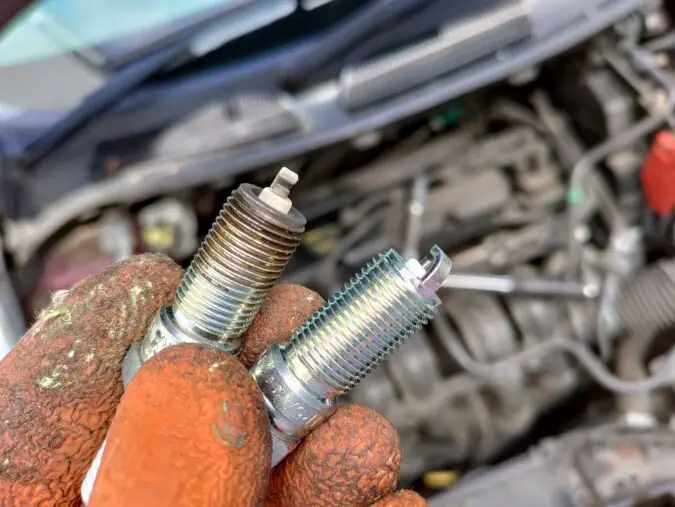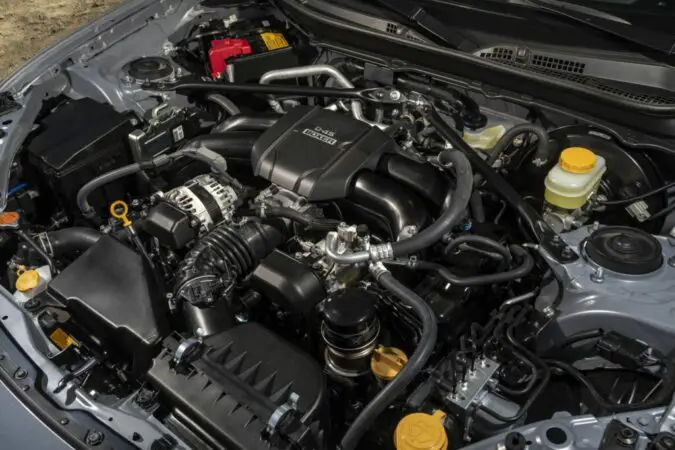Prepare yourself if you have a P0300 code because you’re probably dealing with a challenging diagnostic and repair process. As things stand, this error code could be brought on by various issues. Code P0300 denotes that one or more engine cylinders are misfiring.
When there is not enough fuel burning in the cylinder, an engine misfires. For the engine to run at its best, proper fuel combustion is necessary. Because the engine is powered by the energy released during combustion. The engine speed fluctuates when a cylinder doesn’t fire properly.
If this variation continues, the catalytic converter might be affected. The P0300 trouble code is set off when the ECM (Engine Control Module) notices that one of the cylinders has misfired. The check engine light may occasionally blink to warn the driver to shut down the engine. The engine will jerk more if this scenario worsens, drastically reducing performance.
- P0300 Code
- Causes Of P0300 Code
- Symptoms Of P0300 Code
- P0300 Code Diagnostics
- P0300 Code Repair Cost
- Final Conclusion
- FAQs
P0300 Code
A P0300 code indicates cylinder or engine misfires. The letter P denotes a problem with the powertrain of your car. This letter and the number 3 following it denotes ignition problems. This could mean damaged spark plugs, problems with the fuel pump or injectors, or engine trouble brought on by a blown head gasket or misaligned timing parts.
The number 3 (which primarily denotes misfires) in the code, is typically caused by insufficient or absent combustion in the car’s engine. Your vehicle’s efficiency may be negatively impacted by these technical problems, therefore they must be carefully addressed.
It should be understood that a P0300 code can be a sign of a wide range of other possible codes, from P0301 to P0306. All of these codes show that your car’s diagnostic system has discovered issues with the powertrain. One of your cylinders has specifically misfired. The last number in the P030X code sequence will show which cylinder misfired.
P0300 is a very significant error code. In addition to potentially dangerous driveability concerns, the engine or catalytic converter may also sustain damage.
In the event of significant misfires, the cylinder’s power output may be minimal, resulting in low engine power. The other cylinders have to work harder, as a result, to keep up with your vehicle’s demand for power. Fuel usage and gas mileage could increase as a result.
Ignoring this mistake could lead to an overheated exhaust that melts the catalytic converter. A broken catalytic converter causes the engine to operate under substantial back pressure, which can be risky or harmful. This code indicates that the vehicle has to be brought in for service as soon as possible, ideally on the same day.
Other Codes That May Accompany The P0300 Code
Along with P0300, you’ll probably notice another OBD-II code, ranging from P0301 to P0308, as these all indicate engine misfires. The cylinder that is affected is indicated by the last number in these accompanying codes. An example of a P0302 is one that denotes a cylinder misfire (in this example, cylinder 2).
The cylinder designated as “2” in the engine’s arrangement of cylinders, would be referred to as cylinder number 2 and not not the second cylinder in the firing order. For instance, in a Ford V8, the driver-side bank’s cylinders are numbered 5 to 8, whereas the passenger-side bank’s cylinders are numbered 1 to 4.
On a Chevy or Dodge V8, the driver-side bank’s cylinders are numbered 1-3-5-7, while the passenger-side bank’s cylinders are numbered 2-4-6-8. The timing belt end of four-cylinder inline engines is where the numbers 1-2-3-4 are placed. Although this information is crucial, a P0300, which doesn’t name a specific cylinder, doesn’t have to do much with it.
P0300 error codes frequently appear alongside other P030X error codes because this code indicates that many cylinders have misfired. These six codes share a lot of similarities in terms of their causes, symptoms, diagnostics, and repairs. To identify which code might be occurring and how to fix it, there are a few crucial differences.
P0300 Code Causes
Your car’s ignition issues may be indicated by a P0300 code and a check engine light. A serious misfire will cause the check engine light to blink. But an active misfire is indicated by a consistently lighted engine light. A P0300 code, however, might be caused by numerous reasons-
1. Ignition Misfire
One of the most prevalent causes of an engine misfiring is a malfunction with the ignition system. The capacity to transmit the necessary spark to ignite the air/fuel combination inside the combustion chambers is weakened. This could happen as the spark plugs, ignition cables, distributor cover and rotor, and ignition coil deteriorate with use.
Early on, the misfire won’t be as obvious and the spark will merely be weaker. The misfire will get worse as the ignition parts continue to deteriorate. Also, the combustion process may perhaps stop altogether. This will result in the engine operating with a very strong jerk or shock (the engine may even backfire through the air intake system, producing a loud “pop”).
2. Lean Misfire
Another frequent cause of an engine “miss” is a lean misfire. This is brought on by an unbalanced air/fuel ratio (too much air/insufficient fuel). Since a smooth idle requires a richer (more fuel) combination from the engine, this issue might be more obvious when the car is idling.
As the engine speeds up, the lean misfire may become less noticeable. Or perhaps it could go away due to the considerable improvement in volumetric flow efficiency. One reason a car gets greater gas mileage on the freeway than in the city is this.
Lean misfires could be caused by a variety of issues. These include an open EGR valve, a leaking intake manifold gasket, a broken mass air flow sensor (to learn more, check out our guide on the symptoms of a bad mass air flow sensor), a faulty fuel pump, or a clogged fuel filter.
3. Mechanical Misfire
Misfiring might also be brought on by mechanical issues. Wearing piston rings, valves, cylinder walls, or camshaft lobes are common causes of mechanical misfires. Also, it could be because of leaky head gaskets or intake manifold gaskets, damaged or broken rocker arms, faulty fuel injectors (and/or the electronics that control them), and slipped or improperly installed timing belts or timing chains.
This kind of misfire typically has a “thumping” sound to it. No matter the engine speed, it is typically audible; in fact, as the engine speed rises, it might even get louder.
4. Powertrain Misfire
Sometimes a misfire is unrelated to the engine. A common reason for “jerky” performance that seems like a misfire is an issue with the transmission’s capacity to up or downshift correctly. A chattering clutch in the lockup torque converter or an issue with the operation of the overdrive gear could be the cause of the misfire if it happens at higher speeds.
When slowing down, if the car jerks or seems to be “missing,” it may be because of abrupt gearbox downshifts. It may also be because of severely warped brake rotors, irregular brake drums, or stuck brake shoes or pads.
5. Faulty Spark Plugs
Before symptoms are assessed, it is not advised to make a proximate cause assumption. The most frequent and important reason for a P0300 code is worn or broken spark plugs. Additional codes that are presented as P030X frequently have this cause as well. The compressed combination of gasoline and air in each cylinder of an internal combustion engine is ignited by spark plugs.
Simply defined, spark plugs serve as the vehicle’s acceleration catalyst. Hence, they may be the primary cause of your check engine light or the appearance of any P030X codes. The location of the spark plugs will always vary depending on the make and model of the car. But they are often placed in the cylinder head above the combustion chamber.
Take note that the car’s “On Board Diagnostics System” always keeps an eye on misfires. A misfire could only be transient in some circumstances. For example, a very low fuel level disrupts the engine from receiving its usual flow of fuel resulting in this condition. The check engine light could be turned on and the code would be set off by the onboard diagnostics system.
The onboard diagnostics system will switch off the check engine light but keep a saved misfire code with freeze-frame data if this condition ends.
Other Causes
Another cause of a P0300 code could be a broken or malfunctioning distributor cap. It is normal for symbiotic problems between the distributor cap and spark plugs to be the source of the aforementioned code. Because the distributor cap and spark plugs work together to distribute voltage. Remember this for all P030X codes because they are all caused by the same interrelated problem.
Low fuel pressure, leaking head gaskets, malfunctioning sensors, or catalytic converters are some additional potential causes. A broken sensor could cause any P030X code because sensors transmit data to your Powertrain Control Module (PCM), which is monitored by your on-board diagnostic system.
Before you can rule out serious symptoms, you shouldn’t presume that a P0300 code is the consequence of malfunctioning sensors. Given other, more obvious causes, a defective sensor is one of the most challenging issues to isolate. Before concluding that a sensor is the problem, make sure to rule out any other likely explanations.
Your car contains more than a dozen distinct types of sensors. Each one performs a separate role for various cylinders, both individually and/or in groups. The following is the complete list of causes that could have triggered a P0300 code-
- Faulty or worn-out spark plugs
- Rusty or damaged spark plug wires and or coils
- Defective fuel injectors
- Irregular ignition timing
- Blockage of EGR valves or tubes
- Vacuum leakage
- Low fuel pressure
- Leaking head gaskets
- A broken distributor cap
- A malfunctioning camshaft sensor
- A faulty crankshaft sensor
- A faulty mass airflow sensor
- A faulty oxygen sensor
- A broken throttle position sensor
- A defective catalytic converter
- A faulty PCM
- Defective or deteriorated distributor cap
- Defective or worn-out rotor button
Misfire Symptoms
The most typical sign of any powertrain-related code indicating a cylinder misfire is the check engine light turning on. However, the check engine light will flash in the event of a serious misfire that could harm the catalytic converter.
Rough idle is another sign of cylinder misfires. When your car shakes or vibrates while the engine is running but it is either parked or completely stopped, it is rough idling. Other signs of cylinder misfires include sluggish acceleration—which might feel like a stop-and-go motion, an increase in fuel consumption (requiring frequent stops to fill up your gas tank), or difficulty starting the car.
Remember that any P030X code’s symptoms are a direct result of probable problems with your car’s combustion process Any code between P0301 and P0306 indicates multiple misfires and can have significant consequences.
When a misfire happens, a technician needs to fix it right away. Cylinder misfires can seriously impair your car’s ability to drive. When a P0300-P0304 code appears, it may cause your car to stall or even not turn on at all. It may also make driving risky if a P030X code appears.
P0300 Code: Is It Safe To Drive
A P0300 error code could have detrimental effects. This indicates the absence of a crucial component for the drivability of your car. The safety of a driver is of utmost importance because it is everyone’s duty to be conscious of both their surroundings and the performance of their vehicle. Making sure your car is secure is essential for keeping both you and the people around you safe.
Finding your nearest repair center and letting a professional diagnose and fix the problem is advised after detecting a P0300 code or any other code between P0301 and P0306. Be aware that a towing service might be your safest option for getting your car to its servicing location if you are currently suffering any P0300 code symptoms.
Testing For P0300 Code
There are numerous factors that might cause an engine to misfire, and the computer may or may not detect them and turn on the check engine light on the car. Start by checking that the fuel and ignition systems are functioning properly. Next, consider less likely causes of such issues with the EGR and EVAP systems.
Use the scan tool to read any diagnostic troubleshooting codes or misfire codes to make sure. Since a misfire does not always result in the setting of a diagnostic trouble code, it is crucial to perform a cylinder balancing test to identify the misfiring cylinder or cylinders.
Once you’ve identified the troublesome cylinder or cylinders, see if there is a spark there. If you see wear and tear, anti-freeze, carbon tracks, etc., remove the spark plug and inspect the spark plug wire (or COP ignition coil and boot). Check the fuel injectors, vacuum leaks, compression tests, etc. if the ignition system is not the source of the issue.
P0300 Code Diagnostics
When the powertrain computer shows the P0300 error code, the “misfire monitor” has discovered an RPM difference of greater than 2% between the firing of any two (or more) cylinders in the firing order. By counting the crankshaft sensor pulses, the misfire monitor continuously monitors the crankshaft’s rate of rotation. The monitor is looking for a steady rise or fall in engine RPM.
The Misfire Monitor starts to track the RPM increase—or lack thereof—contributed by each cylinder if there are jerky and abrupt changes in the speed output of the crankshaft sensor. The Monitor will set a P0300 code and turn on the check engine light if the variation is greater than 2%.
The check engine light may blink or pulse steadily if the variance is greater than 10%, which is a sign that a dangerous misfire in the catalytic converter is taking place.
It’s crucial to note the freeze frame details and subsequently replicate the code-setting circumstances during a test drive when diagnosing a P0300 error code. Because a P0300 (a specific misfire) can occasionally be challenging to spot, pay close attention to the engine load, throttle position, RPM, and road speed.
Pay extremely close attention to the cylinder(s) specified in the misfire code (s) if the engine system has a misfire counter for those cylinders on the Scan Tool Data Stream.
In the absence of a cylinder misfire counter, you might have to swap out individual parts, such as ignition coils and spark plugs, in order to identify the misfire’s underlying cause. The breakdown or malfunction of another system or component could cause the engine to misfire. Therefore it’s crucial to take note of and record any additional codes.
P0300 Code: Repair Cost
The repair cost of a P0300 code ranges from $75 to a little over $700. The wide range results from the fact that P0300 can be brought on by anything, including an outdated spark plug, a vacuum leak, or low engine compression. Without appropriately diagnosing the problem initially, an accurate cost of repair cannot be estimated.
When you call a qualified technician, they will bill you for the time it takes to diagnose the problem, their labor, and any repair parts your vehicle may require. So, what will the repair bill look like now that you are aware of the problem? The prices listed below are typical charges for resolving the root cause of fault code P0300-
- Spark plugs: $25-500
- Ignition coils: $100-600
- Fuel injectors: $400-1,500+
- Fuel pump: $100-1,000+
- Sensors: $40-300+ (fuel pump sensor, crank sensor, cam sensor)
- Vacuum hoses: $0-200
The higher end of a few of these statistics shouldn’t cause you too much anxiety. For a 4-cylinder engine, a set of four spark plugs costs as little as $25, while ignition coils cost about $100. Parts often cost a little bit more when there are more cylinders. Along with this, the labor cost may increase by another $100 to $300.
Unfortunately, direct injection engines are most frequently affected by fuel injector problems. These precise, high-flow injectors are around $500 for a set. High-pressure fuel pump issues are another issue with direct injection engines, and they can be expensive to fix.
Otherwise, the essentials, including vacuum hoses, sensors, and electrical connections, are usually all that remain. All are affordable components for the DIY crowd, making repairs affordable. However, P0300 repair costs can build up if you take the car to a repair shop.
P0300 Code Chevy Silverado
P0300 is undoubtedly a cause for worry and may endanger the Chevy Silverado’s ability to drive. It frequently comes with codes P0301–P0308. These exact codes likewise show that a misfire was found, but they identify the individual cylinder. The cylinder indicated by the cylinder-specific codes would be the place to start looking for your problem if you have P0300 and one of these other codes.
P0300 Code Nissan
Despite the fact that code P0300 can impact any type of car, certain Nissan cars are particularly prone to P0300 error codes for reasons that aren’t always clear. The majority of Nissan applications, however, are quite sensitive to aftermarket ignition system parts, such as spark plugs, ignition coils, and both crankshaft and camshaft position sensors, as lengthy experience in the automotive repair industry has taught.
Additionally, the KA24DE engine, which was utilized in older Nissan vehicles, was particularly prone to vacuum leaks. This was due to an inadequately constructed intake manifold, which leads to the leakage of the intake manifold gaskets. This in turn leads to sporadic misfires.
P0300 Code: In Conclusion…
As mentioned, engine misfire is a rather common problem, whether it is a singular incidence or not. You shouldn’t be frightened if your vehicle has a P0300 code because it can occur in many popular models of various brands. While it is possible to fix the issue on your own, doing so is only recommended if you have prior experience with automobiles and this code.
The best course of action is to have your car checked out right away at an auto repair shop. Driving with a P0300 code unfixed would almost certainly result in poor fuel efficiency and higher gas prices. Also, be aware of the enormous repair expenses of an engine that has been seriously damaged if misfires wind up creating more severe issues.
FAQs On P0300 Code
How To Fix P0300 Code
There are many potential causes for the storage of code P0300. As a result, there isn’t a straightforward solution to the problem. As said above, you must correctly diagnose the code before making any required repairs. You must conduct your research or leave it to the professionals because the code could be caused by anything from worn-out spark plugs to an internal engine problem.
What Could Cause A P0300 Code
Engine misfires can be caused by faulty gasoline, faulty fuel ignition, or faulty internal engine failure. The most frequent cause of this, particularly if you haven’t had a service, is faulty or worn-out spark plug coil packs. These are a few of the contributing reasons for the P0300 engine code.
What Does Code P0300 Mean
The P0300 engine code indicates a cylinder misfiring issue. When proper combustion doesn’t occur or the spark plug is destroyed, misfires occur. Extreme weather conditions might also harm your car’s catalytic converter causing them.
Can A Bad Catalytic Converter Cause A P0300 Code
Code P0300 can be set by a malfunctioning catalytic converter, albeit this is rather uncommon. A restricted catalytic converter may produce enough back pressure to result in a misfire and set off code P0300.
Can A Bad O2 Sensor Cause A P0300 Code
Yes. An O2 sensor failure can lead to an improper air/fuel ratio. Because it is one of the most important inputs to your car’s computer for fuel regulation. Additionally, it may cause the engine to misfire and produce the P0300 error code.











